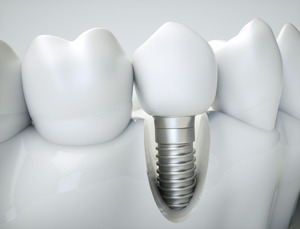
When you think of modern solutions for tooth loss, dental implants likely come to mind. But did you know that they have actually been around in different forms for quite a while? Dental implants have a history that dates back to ancient times, and they have come a long way to become the reliable tooth replacement method that they are today. Below is a brief look at how dental implants have evolved.
The First Dental Implants
The earliest examples of dental implants are from 4,000 years ago; back then, people in China would use bamboo pegs inserted into the jawbone to re-complete their smiles. The ancient Egyptians did a similar thing about 2,000 years later, but their implants were made out of precious metals.
Unfortunately, ancient Chinese implants and ancient Egyptian implants suffered from the same problem: they completely lacked the means to form a lasting bond with the jawbone. Thus, by modern standards, these early implants would be said to have failed.
Later Attempts at Dental Implants
In pursuit of the idea of a tooth replacement that could be inserted directly into the jawbone, researchers in the 1700s, 1800s, and early 1900s tried a wide variety of materials for making dental implants, such as silver, porcelain, and 24-karat gold. One of the more successful examples came from Dr. Alvin Strock and Dr. Moses Strock, who placed implants made out of Vitallium that managed to last for a long time.
The Rise of Modern Dental Implants
The first steps toward dental implants as we know them today were taken in 1952. Dr. Per-Ingvar Branemark was conducting an experiment that involved inserting titanium into a rabbit’s femur. When he tried to remove the titanium later, he couldn’t because it had fused to the bone.
Dr. Branemark recognized the potential of this accidental discovery. In 1965, he placed the first titanium dental implant to replace a missing tooth. This approach ultimately proved successful, and Dr. Branemark ended up publishing a number of studies that showed the advantages of titanium implant posts.
Dental Implants Today
A number of advancements have helped make titanium dental implants even more successful. For example, it was found that roughening the surface of the implant posts helped them form a stronger bond with the jaw because it increased the surface area where the bone could become attached.
Dental implants can be relied on to replace any number of missing teeth, and they can last for decades if they receive the right kind of maintenance. If you’re interested in getting dental implants in order to enjoy a complete smile again, talk to your dentist; they can help you figure out whether the treatment is right for you.
About the Author
Dr. Keith Lisonbee went to the Lake Erie College of Osteopathic Medicine for his Doctor of Dental Medicine. He holds membership with the American Academy of Implant Dentistry and is a Fellow of the International Congress of Oral Implantologists. At Patriot Dental in Pensacola, he’s able to place dental implants in-office for the convenience of his patients. To schedule a consultation with Dr. Lisonbee, visit his website or call (850) 477-1120.

